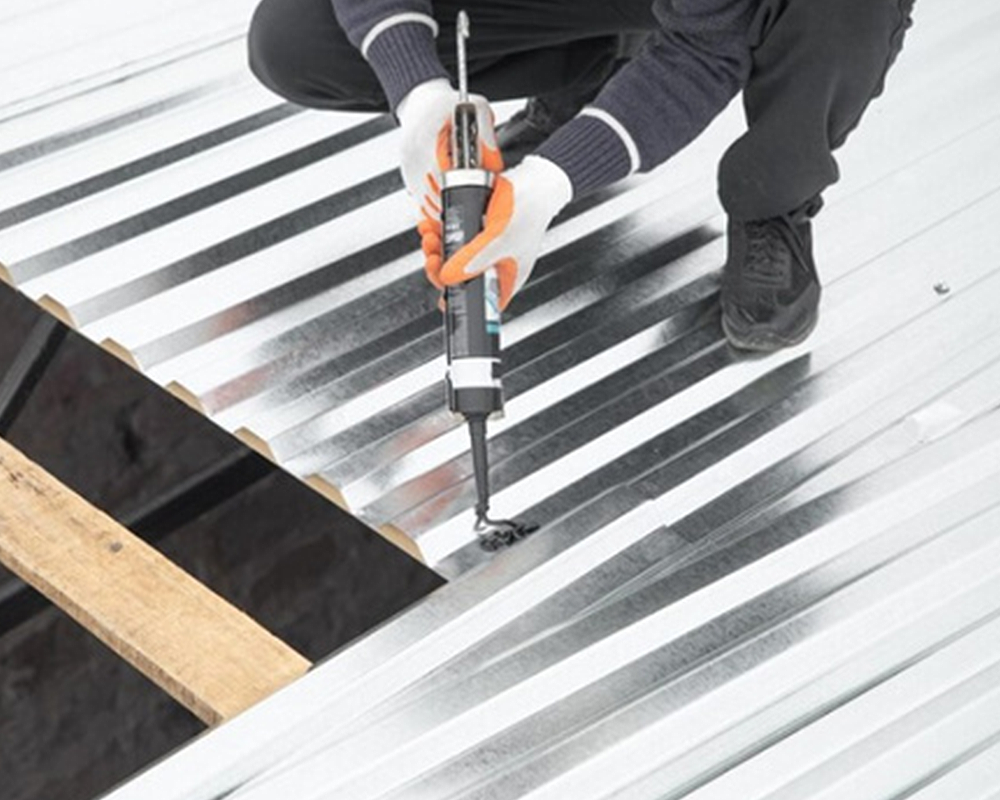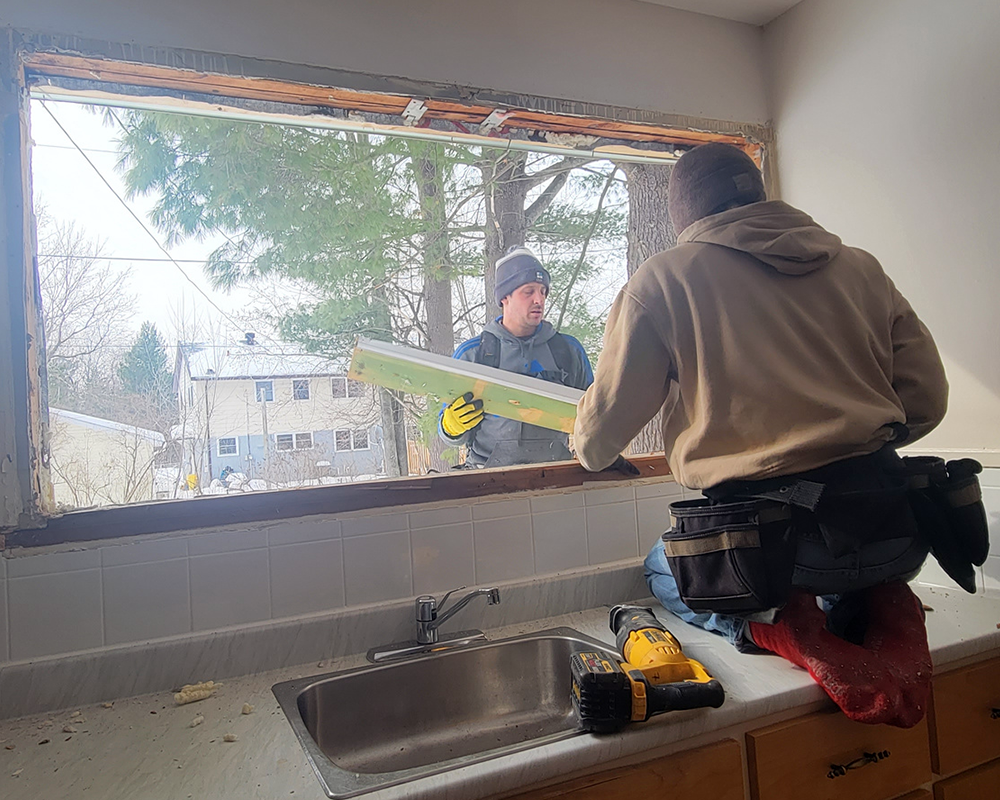
At HEIMS, we understand the significance of caulking and sealing as essential processes in construction that help maintain the integrity, energy efficiency, and appearance of buildings. Our approach to caulking involves filling gaps, joints, and cracks to prevent air and water infiltration, improve insulation, and enhance the overall durability of the structures.
What is Caulking? It is the application of a flexible material called caulk to seal gaps between different surfaces, such as walls, windows, doors, and trim.
What is Sealing? It is the process of closing off gaps and joints using a broader range of materials, including sealants, adhesives, tapes, or coatings. Sealing is often employed in areas where a more robust, watertight, or airtight barrier is required, such as in waterproofing basements, sealing concrete structures, or preventing leaks in plumbing systems.
Importance of Caulking and Sealing:
Energy Efficiency: Properly sealed gaps and joints prevent drafts and air leakage, reducing energy consumption for heating and cooling.
Moisture Protection: Caulking and sealing prevents water intrusion, which can cause structural damage, mould growth, and rot.
Soundproofing: Sealing gaps and openings helps reduce noise transmission between rooms or from outside sources.
Aesthetic Enhancement: Well-executed caulking and sealing improves the appearance of the building by creating clean and uniform lines.
Common Applications of Caulking and Sealing:
Windows and Doors: Sealing around windows and doors prevents air and water penetration, improving energy efficiency and reducing drafts.
Expansion Joints: Caulking is applied in expansion joints to accommodate movement and prevent water ingress in areas such as concrete slabs and facades.
Gaps and Cracks: Caulking is used to fill gaps and cracks in walls, floors, ceilings, and other building components.
Plumbing and HVAC Penetrations: Sealing around pipes, vents, and other penetrations helps maintain the building envelope’s integrity.
Exterior Wall Joints: Exterior caulking is essential for weatherproofing and preventing moisture damage in joints between different materials.
Types of Caulking that HEIMS recommends:
Silicone Caulk: Resistant to water and extreme temperatures, making it suitable for both interior and exterior applications.
Acrylic Latex Caulk: Versatile, paintable, and commonly used for interior applications where water exposure is minimal.
Polyurethane Caulk: Highly durable, flexible, and excellent for outdoor applications where movement and weather resistance are crucial.
Butyl Rubber Caulk: Ideal for sealing joints with high movement, such as expansion joints and window perimeters.
Types of Sealants that HEIMS recommends:
Silicone Sealants: Silicone sealants are highly flexible and durable. They are resistant to weathering, UV radiation, and extreme temperatures. Silicone sealants are commonly used for sealing joints in windows, doors, and curtain walls.
Polyurethane Sealants: Polyurethane sealants have excellent adhesive properties and are highly flexible. They provide good resistance to weathering, moisture, and chemicals. Polyurethane sealants are commonly used for sealing expansion joints, concrete joints, and metal joints.
Acrylic Sealants: Acrylic sealants are water-based and easy to apply. They dry quickly, have good paintability, and offer reasonable flexibility. Acrylic sealants are commonly used for interior applications, such as sealing gaps between walls, baseboards, and window frames.
Butyl Sealants: Butyl sealants have excellent water resistance and adhesion properties. They are commonly used for sealing joints in roofing systems, metal panels, and concrete construction.
Asphalt Sealants: Asphalt sealants, also known as bituminous sealants, are made from asphalt or bitumen. They are used for sealing cracks in asphalt pavements, driveways, and parking lots.
Hybrid Sealants: Hybrid sealants combine the properties of different sealant types, such as polyurethane and silicone. They offer a balance of flexibility, adhesion, and weather resistance. Hybrid sealants are suitable for a wide range of applications, including sealing joints in construction.
HEIMS Caulking Prep and Process:
Surface Preparation: Clean the area thoroughly, removing old caulk, dirt, debris, and loose materials.
Joint Preparation: Use a caulk-backing material (backer rod) for larger gaps to achieve optimal sealant adhesion and proper joint depth.
Caulk Application: Apply caulk evenly using a caulk gun, ensuring complete coverage of the joint or gap.
Tooling and Smoothing: Use a caulk tool or putty knife to smooth and shape the caulk for a neat, professional finish.
Drying and Curing: Allow sufficient drying and curing time as per the caulk manufacturer’s instructions before exposing the sealant to moisture or painting.
HEIMS Caulking and Sealant Selection:
HEIMS will consider the specific requirements of the application, such as the joint type, movement capability, exposure to weather, and anticipated substrate movement.
Then, based on the suppliers’ recommendations and past project experiences, HEIMS will select the most suitable product for your project.
Safety Precautions and Regulations:
Safety Guidelines: Follow manufacturer guidelines and safety data sheets for proper handling, storage, and disposal of caulk and sealant products.
Compliance: Follow local building codes and regulations concerning the type of sealants required for specific applications, especially in fire-rated areas.
Adequate Ventilation: Ensure proper airflow when applying sealants in enclosed spaces to prevent inhalation of fumes.
Personal Protective Equipment (PPE): Wear gloves and safety glasses to protect skin and eyes from contact with sealant materials.
Compliance: Follow local building codes and regulations concerning the type of sealants required for
Proper caulking and sealing requires specific materials and application for the areas being sealed and the awareness of the environmental conditions. It is vital to consult the professionals at HEIMS, who will follow industry best products and practices for your particular project.
Sliding Work Gallery


Comments are closed.